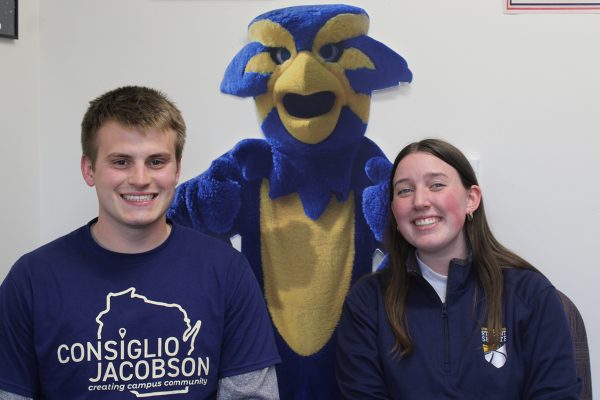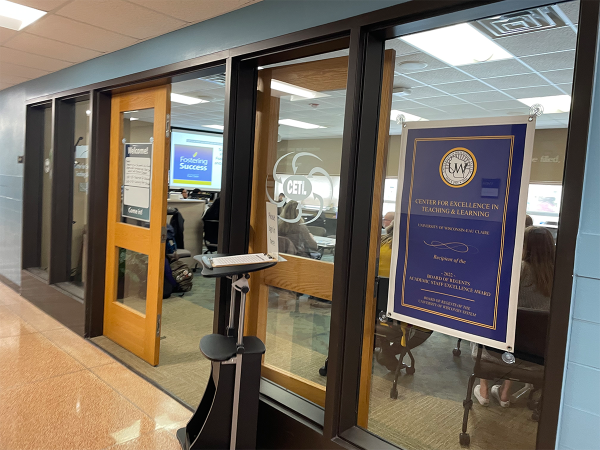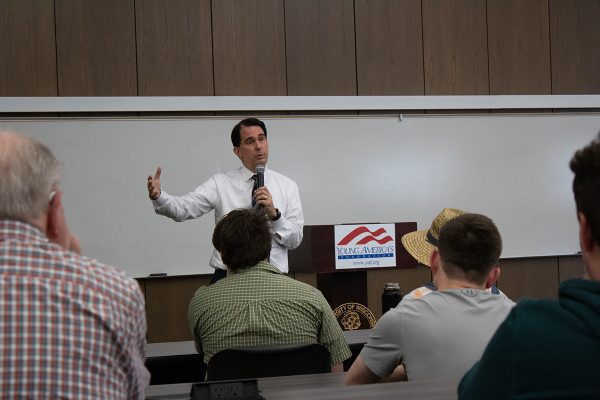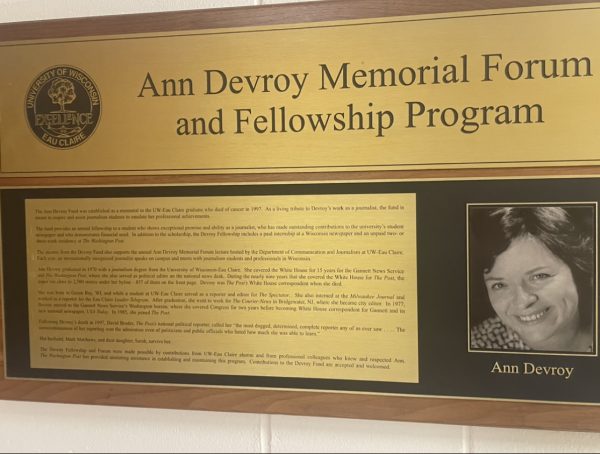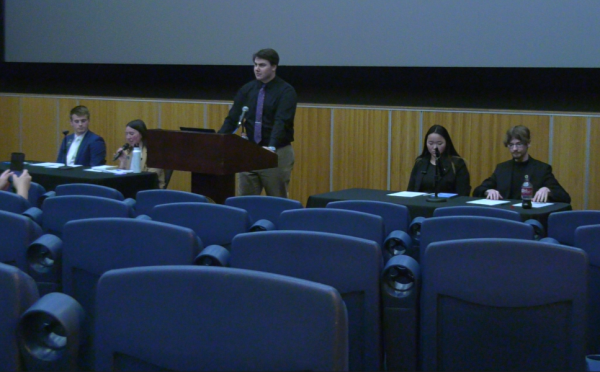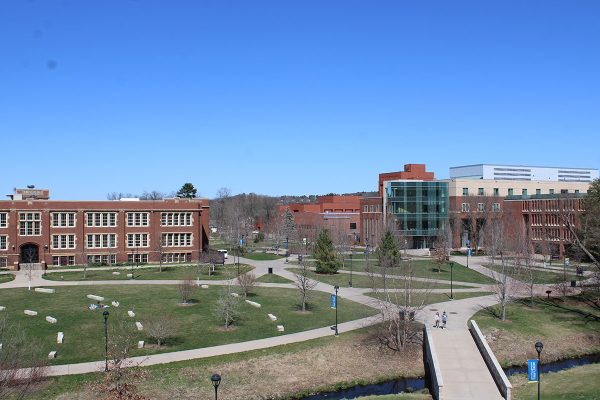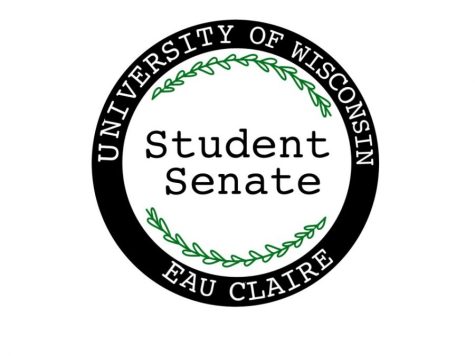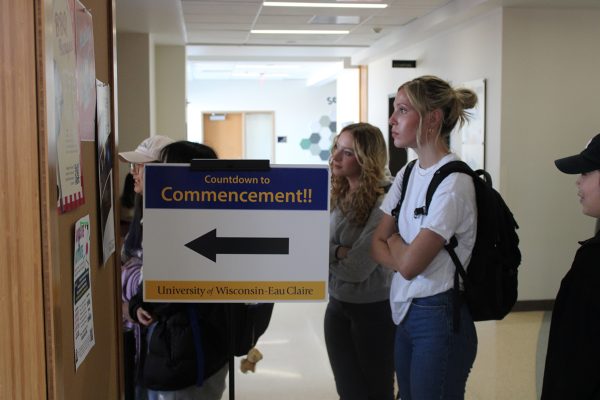Blue and gold equals green: Student works to create a sustainable campus
Faculty collaborate with students to design campus climate action plan
More stories from Deanna Kolell
Photo by SUBMITTED
Junior Lauren Graves is passionate about the environment and sustainability on a global scale, which was reinforced during her study abroad experience in Costa Rica.
Before becoming an integral member of multiple sustainability initiatives on campus, Lauren Graves, a junior, said she had a different idea of what she wanted to do with her time at UW-Eau Claire.
“I came into college … and I was like, ‘I’m going to save the world through politics,’” Graves said. “Then I decided, politics, it just doesn’t work; it was too slow. So then I said, ‘I can save the world, literally, through the environment.”
Because Eau Claire didn’t have any majors in sustainability, Graves decided to create her own through the liberal studies program. She said she developed her major around sustainability in a global context. Graves said after she took Physics of Renewable Energy with Dr. Kim Pierson and studied abroad in Costa Rica, she was hooked.
Since then, Graves said she has been involved with a number of sustainability projects on campus, such as the advancing Eau Claire’s Tree Campus USA certification and auditing students’ use of compost, recycling and landfill bins.
However, before her graduation in December, Graves still has a number of sustainability projects to complete, one of which involves developing a campus climate action plan. This plan would serve as a roadmap for the future of Eau Claire’s sustainability efforts.
Everything began in 2007, Graves said, when Eau Claire signed the climate commitment agreement. After former President George W. Bush did not ratify the Kyoto Protocol in 2001, universities across the nation came together to demonstrate the importance of environmental stewardship.
As part of the agreement, the university had to make greenhouse gases inventories. Graves helped complete the fifth biannual inventory last semester as part of the honors course Tracking the Campus Carbon Footprint. As part of the curriculum, she networked with stakeholders, collected data, crunched the numbers and put the data into carbon calculators.
Now that they have the data collected, Graves said the process can move forward to create and implement the climate action plan. She was selected to help develop the plan, along with James Boulter, director of the Watershed Institute, Karen Mumford, associate professor of the Watershed Institute, and other students who took the carbon footprint course: Ryan Frank, Megan McHenry and Nicholas Reitano.
The four students contribute directly to the climate action plan by collecting data, analyzing it and presenting on their findings. The purpose of the climate action plan, Graves said, is to create a timetable alongside objectives for reducing carbon emissions. The long-term goal is to have Eau Claire be carbon neutral.
“Our goal is to influence policy and to make a bigger sustainability culture for our campus, and so the things we have to do now are in the evaluation of our values stage,” Graves said. “We have to get everyone to come together and say, ‘If we really value environmental stewardship, like we said in 2007, how are we going to get there?’”
Graves and her team collaborate with an advisory committee, which comprises 12 campus student and faculty leaders, including Chancellor James C. Schmidt, Assistant Chancellor for Facilities and University Relations Mike Rindo and Student Body President Ashley Sukhu.
The advisory committee ultimately makes decisions for the future of Eau Claire’s sustainable initiatives, but Graves said she and her team serve as a support for the committee. However, she said they especially will push for changes in the buildings and construction projects by ensuring they’re up to Leadership in Energy and Environmental Design (LEED) certification standards.
Eau Claire is taking on a number of new projects to make campus greener, but Graves said some of the work may be counterproductive, such as the renovations to Towers.
“They’re putting in a lot of green measures that are really exciting,” Graves said, “but they don’t realize that because they put air conditioning units in every room, it’s going to counteract, and then some, all their green efforts.”
McHenry, a junior social work student, said working with the team to pursue carbon neutrality at Eau Claire’s campus hasn’t been a seamless process. There have been some challenges, from a lack of funding to multiple priorities.
“There are some roadblocks,” McHenry said. “(But) the passion is here….UWEC is a living, fire-breathing, not-to-be-forgotten campus full of powerful individuals willing to work toward a common value of sustainability. I believe we’ll become a great example of how a public university can go green.”
In addition, Graves said she will take on another challenge by developing her capstone next semester. In her “final hurrah” as a student at Eau Claire, she will develop a sustainability dashboard to assemble information in one place and to inform people about these initiatives.
“We have nothing that’s tracking (the data) so we can show the data to students or teachers, or even to just see the progress,” Graves said. “Every sustainability initiative we have, people don’t know what’s going on.”
For example, Graves said the solar panels on top of Davies have a mechanism to track data, but it’s not being collected or displayed. Her dashboard would give people the opportunity to follow and interpret data trends.
Eau Claire, and universities in general, provide the ideal place to conduct this research, Graves said, because it functions as a “living laboratory.” Students are excited to learn and participate in projects, and professors are enthusiastic about teaching their students.
In particular, the climate action plan is coming at an interesting time for Eau Claire, Graves said. Many projects are taking place over the next few years, and the university has started evaluating its commitment to environmental stewardship.
Finalizing the campus action plan, as well as moving forward with additional sustainability initiatives, would also help Eau Claire stack up against its peers. Graves said Eau Claire still has room to grow, as the university recently included its first sustainability course in the curriculum but still does not have a sustainability major.
However, Eau Claire currently leads the UW System in clean energy sources for electricity, and it’s in the middle of the pack for overall emissions.
Reitano, an American Chemical Society (ACS) chemistry student in his final semester at Eau Claire said the university’s current initiatives have shown dedication to creating a more sustainable campus and building bridges to the community.
“Implementing sustainability projects would send a message to the broader community to take on some of these projects as well,” Reitano said. “By creating a culture of sustainability, thousands of students will be primed to promote sustainability in their future careers and communities.”
The focus on visibility and creating connections between the university and the community, Graves said, is what will create a long-lasting culture of sustainability on the Eau Claire campus.
“We can’t achieve our climate action plan or anything else that we’re doing unless people can see it, unless it is visible, unless we actually make those connections,” Graves said. “We’re finally making those connections, and now that we have, we’re seeing common values and general interest. The students want it. The administration wants it. Everyone wants it.”


